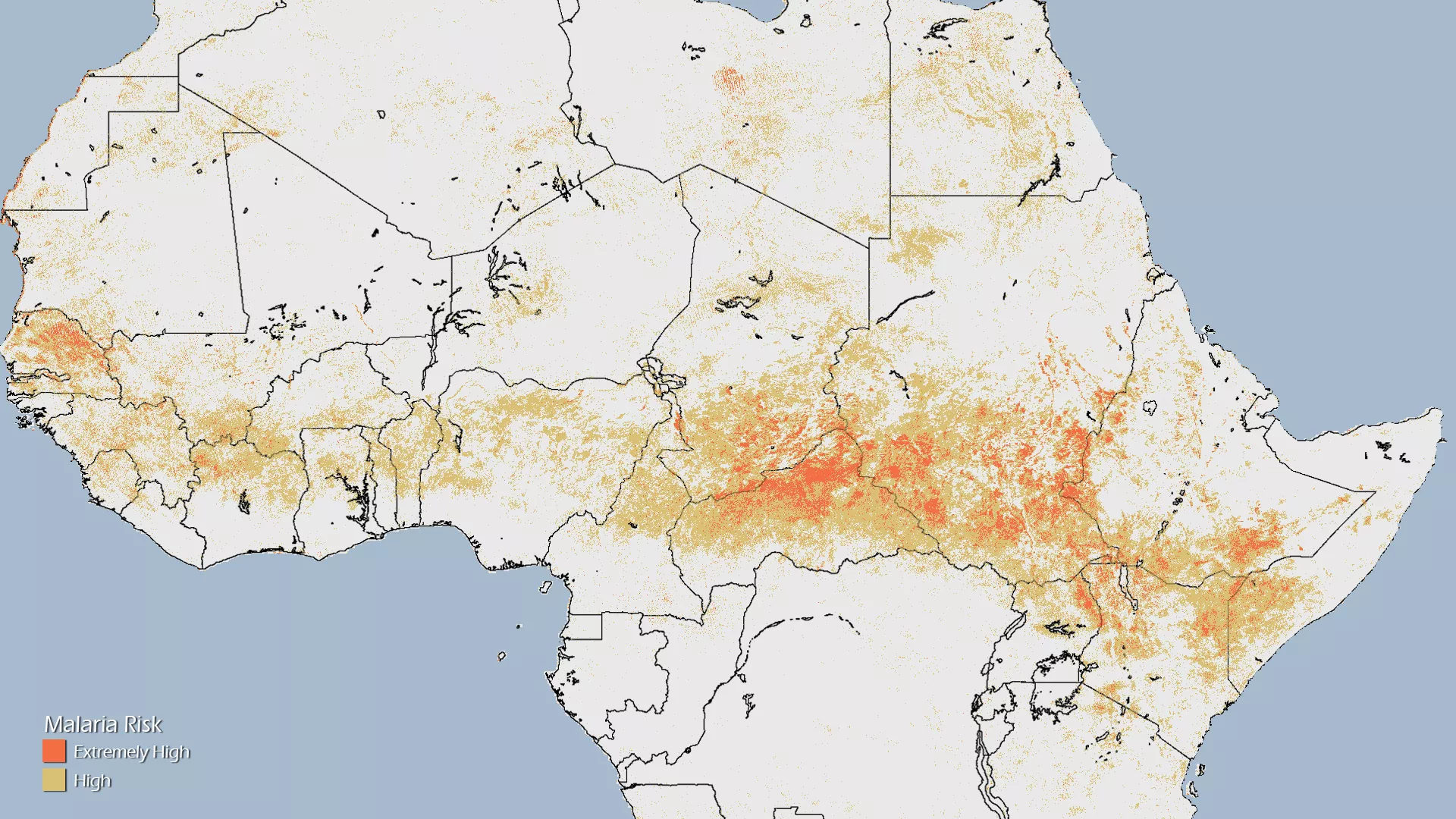
The World Health Organization estimates that a child dies every minute due to malaria. As the Horn of Africa moves into its bi-annual wet season, increases in precipitation are creating the necessary habitat for the vectors of malaria: mosquitoes. Mosquitoes become more active as the land surface becomes warm and wet, bringing them and their disease causing parasites in greater contact with humans. NOAA is developing an experimental Malaria Risk Index for Africa and other parts of the world by analyzing satellite data from the POES AVHRR sensor for various land surface properties, including temperature, moisture, and vegetation greenness. Shown here is data for the week of December 16, 2011. A band of high and extremely high malaria risk is seen stretching across Sub-Saharan Africa, with prominent risk areas in central Africa and the western Horn of Africa; other areas remain at normal or low risk for malaria.